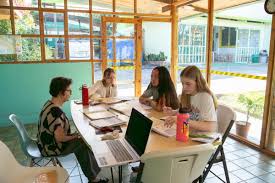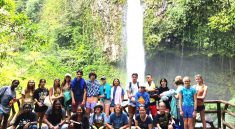Learning a new language opens doors to richer life experiences, deeper connections, and broader career opportunities. But what if you could combine that linguistic growth with breathtaking nature, vibrant traditions, and genuine local encounters? Costa Rica Spanish School offers all of this, providing an immersive educational experience that statistics show leads to greater language proficiency, cultural understanding, and life satisfaction.
Why Costa Rica is a Top Destination for Spanish Immersion
Costa Rica consistently ranks among the most popular countries for Spanish-language learners, for good reason. With a reputation for political stability, natural biodiversity, and welcoming locals, the country attracts students from across the globe who want to expand both their language skills and their worldviews.
The 2023 Annual Report by the Institute for International Education notes a 17% increase in language learners choosing Central America, with participants reporting higher retention and spoken fluency rates when studying in immersive environments like Costa Rica. Over 85% of those students said being surrounded by native Spanish speakers propelled their progress beyond what classroom study alone could offer.
The Benefits of Immersive Language Learning in Costa Rica
Rapid Improvement in Fluency
When you study at a Spanish school in Costa Rica, you’re not just learning grammar from a textbook. Every interaction, from ordering coffee to asking for directions, becomes a lesson in pronunciation, context, and vocabulary.
Surveys by language acquisition researchers found that students who spent a month or more in an immersive Spanish program in Costa Rica improved their speaking and listening skills 30% faster on average compared to those studying in non-immersive settings. This is due to real-world practice, instant feedback from native speakers, and the constant exposure to new phrases, idioms, and dialects.
Daily Exposure Equals Lasting Learning
Unlike typical classroom settings, the learning doesn’t stop when the lesson ends. Your walk to class becomes listening practice as you overhear everyday conversations. Market visits transform into vocabulary games. Public transportation becomes a crash course in casual slang. The result? These organic experiences help solidify language patterns and usage, making recall quicker and more accurate.
Researchers at the Modern Language Journal highlight that learners immersed in the target culture had 25% higher long-term retention of vocabulary and grammar structures compared to those only learning in their home country.
Culturally-Enriched Education
Costa Rica’s Spanish schools often integrate cultural workshops, cooking classes, dance lessons, and field trips into their curricula. This fusion means students not only master the language but also gain insights into Costa Rican customs, festivals, and daily life.
Participation in cultural immersion has been linked to increased motivation and engagement. One landmark study from the University of Granada found that learners engaged in culture-based language programs showed a 40% rise in active class participation and self-confidence. Being involved in local festivities, learning to cook regional dishes, or joining a Latin dance class also helps you better understand the context behind the words.
Authentic Connections and Friendships
Living and learning alongside Costa Ricans and fellow students from around the world leads to friendships that last long after the course ends. Networking with locals means you’ll pick up natural pronunciation, colloquial expressions, and the rhythm of everyday speech.
A recent survey by the Language Immersion Association found that 90% of alumni from Costa Rican Spanish schools considered the relationships they built as one of the most valuable outcomes of their studies. These friendships often lead to ongoing language exchange and a deep sense of belonging in a new culture.



